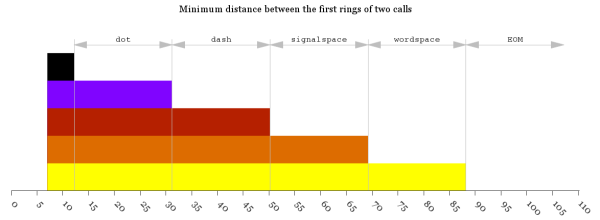Readers of a certain age will remember the payphone trick of letting the phone ring once and then hanging up to get your quarter back. This technique was used with a pre-planned call time to let someone know you made it or you were okay without accruing the cost of a telephone call. As long as nobody answered you didn’t have to pay for the call, and that continues to be the case with some pay-per-minute cellphone plans.
This is the concept behind [Antonio Ospite’s] ringtone data transfer project called SaveMySugar. Don’t judge him, this work has been ongoing for around ten years and started back when cellphone minutes were a concern. We’re just excited to see that he got the excruciatingly slow thing to work.
Those wanting to dig down to the nitty-gritty of the protocol (and you should be one of them) will want to read through the main project page. The system works by dialing the cellphone, letting it ring once, then hanging up. The time between redials determines a Morse code dot, dash, or separation between characters. Because you can’t precisely determine how long it will take each connection to read, [Antonio] built ‘noise’ measurement into the system to normalize variations. The resulting data transfer works quite well. He was able to transfer the word “CODEX” in just six minutes and thirty seconds. But it is automatic, so what do you care? See the edge-of-your-seat-action play out in the video below.
If you can’t stomach that baud, here’s a faster Morse code data transmitter but it doesn’t use the phone.
Continue reading “Free Cell Data Transfer With Slowest Morse Code Ever”












